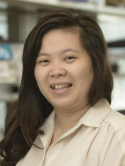Targeting the residual leukemia cells after chemotherapy Journal Article
| Authors: | Vu, L. P.; Kharas, M. G. |
| Article Title: | Targeting the residual leukemia cells after chemotherapy |
| Abstract: | One of the biggest challenges in treating acute myeloid leukemia (AML) is relapse of aggressive disease after treatment. In this issue of Cancer Cell, Boyd et al. characterize a molecularly distinct population of chemotherapy-induced transient leukemic regenerating cells (LRCs), which can be exploited to prevent AML recurrence. One of the biggest challenges in treating acute myeloid leukemia (AML) is relapse of aggressive disease after treatment. In this issue of Cancer Cell, Boyd et al. characterize a molecularly distinct population of chemotherapy-induced transient leukemic regenerating cells (LRCs), which can be exploited to prevent AML recurrence. © 2018 Elsevier Inc. |
| Journal Title: | Cancer Cell |
| Volume: | 34 |
| Issue: | 3 |
| ISSN: | 1535-6108 |
| Publisher: | Cell Press |
| Date Published: | 2018-09-10 |
| Start Page: | 353 |
| End Page: | 355 |
| Language: | English |
| DOI: | 10.1016/j.ccell.2018.08.012 |
| PROVIDER: | scopus |
| PUBMED: | 30205040 |
| DOI/URL: | |
| Notes: | Short Survey -- Export Date: 1 October 2018 -- Source: Scopus |
Altmetric
Citation Impact
BMJ Impact Analytics
Related MSK Work




